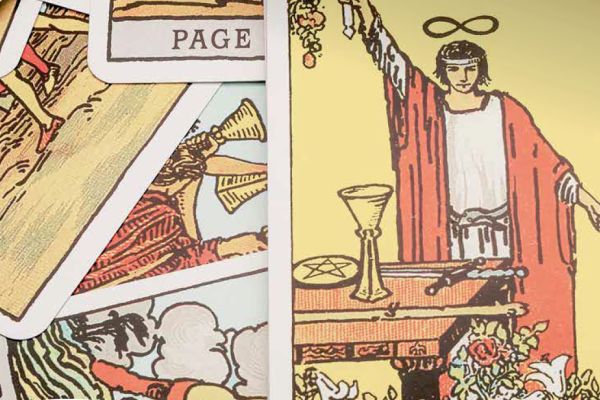It’s that time of the year again. The equinox has passed, the days draw in, and darkness takes hold. For some, there is a sense of excitement as winter encroaches: it means taking refuge in well-lit rooms with those we love, the familiar rituals around festivals of light punctuating the gloom. For others, dread accompanies the shortened days of the winter months, and the darkness seems suffocating, endless. We buy expensive seasonal affective disorder (SAD) lamps, stockpile vitamins, and brace ourselves for another uniquely British winter. As someone who usually locates myself in the first camp, I relish the shifting down a gear to the quietness that winter brings, and my thoughts turn to how the perspective of a fresh season might inform my practice as a counsellor.
For poet Mary Oliver, the fading season is a reminder to let go of the old in order to make way for the new:
Every year we have been
witness to it: how the
world descends
into a rich mash, in order that
it may resume.
And therefore
who would cry out
to the petals on the ground
to stay,
knowing as we must,
how the vivacity of what was is married
to the vitality of what will be?1
If winter is the season we love to hate, what of its darkness is it that makes it such a difficult time to bear for so many? Is there a place for darkness in psychotherapy? And if there is, what lessons can it teach us?
Traditionally, psychotherapy has been about light, not dark. People seek therapy in order to shed light on their stories and the past, to make sense of what has been in order to bring clarity to the present. If to be enlightened is to be in possession of knowledge, about oneself and the world, then surely psychotherapy is about casting light on the knotty and mysterious parts of ourselves, and why we think and act the way we do? Therapy should not be about descending into further darkness. As the light seeps away and we enter another winter, I would suggest that occasionally the journey we make, both as client and as therapist, requires something of a descent – in order that we can emerge with a new clarity and understanding.
The spiritual tradition of darkness
It might help to begin from a place where darkness has always had a role, because to step away from the neon lights and bright promise of the telly evangelist, the Judeo-Christian tradition is littered with people and stories that speak of a grudging respect for the dark. The tale of Job, whose name is now synonymous with suffering and patience, is one such story. Job is a man who knows success. He has seven sons and three daughters, 7,000 sheep, 3,000 camels, 500 oxen, 500 asses, and many servants. He is the richest man among all the people of the East. He is also a good man, blameless and upright before God. This does not go unnoticed by the devil, who suggests to God that Job is only good because of his easy life. If his comforts were taken from him, he would turn away from God and curse his name. So God takes everything away: his livestock and livelihood, his family, his servants, his home and finally his health.
His friends urge him to admit his guilt (for surely he has sinned to deserve such suffering) and renounce God. He is reduced to sitting on a dung heap, scratching his sores with bits of broken pottery. As a righteous man, Job and his comforters seek enlightenment as to why an all-loving God would allow such suffering. Job wants answers to life’s mysteries, but when he plaintively calls on God for an answer to his suffering, he is met, not with silence, but with further questions. God speaks to Job from out of the whirlwind:
‘I will ask you questions, and you must answer me. Where were you when I made the earth’s foundation? Who marked off how big it should be? What were the earth’s foundations set on? Or who put its cornerstone in place? Who shut the doors to keep the sea in when it broke through and was born?’ Job 38:3–92.
It’s certainly no fairy tale, it may lack the comfort and reassurance that we yearn for, yet this story of suffering has been an important one for Christians and Jews alike. What if there isn’t a reason for suffering? What if there are no clear answers after all, only more questions?
Another voice that seeks to confront doubt and uncertainty comes from the Psalmist. ‘My life is full of troubles. I am nearly dead. They think I am on the way to my grave. I am like a man with no strength. Have been left as dead, like a body lying in a grave. You don’t remember dead people. They are cut off from your care. You have brought me close to death. I am almost in the dark place of the dead.’ Psalm 88.2
There is something refreshing in the searing honesty of these ancient voices that are able to say what we all occasionally feel: that life isn’t always easy or fair, that despair can be overwhelming, and that sometimes there are no answers. When lives are increasingly lived publicly – and perfectly – on social media, it can be a strange comfort to know that darkness is a shared human experience. Young people in particular seem vulnerable to the social media lie that life must be glossy, sunny and relentlessly upbeat. With huge increases in anxiety disorders, it is sometimes argued that we are too quick to pathologise the feelings that are part of what make us human. Sometimes it is enough to know that living through darkness, and weathering this particular season of the soul, is part of a shared human experience.
The dark night of the soul
Another voice to join the chorus paying testament to the strange lessons of the dark is St John of the Cross and his ‘Dark night of the soul’.3 As an expression that has entered the secular lexicon, this can mean different things to different people: a crisis of faith, a time when the presence of God cannot be felt, a time following loss or of deep unyielding grief. A period such as this is never going to be easy, but many who have travelled through just such a dark night describe the unexpected lessons it taught them, and how it has offered them a new perspective and deeper clarity. When we are surrounded by a culture that wants quick answers, there is something to be said for stilling ourselves enough to listen to, and sit with, the questions. We may even grow to love them. I believe this was what Keats was referring to when he spoke of ‘negative capability’ – the ability to stay with uncertainty and doubt in order to get to the heart of poetry. It takes a certain amount of risk.4
Living with the dark emotions
As therapists, it is our job to accompany people on their journeys. We want to help – to ease the burden. We want to be effective, to see change, and we want progress to be made. In a world of targets and measurable outcomes, there is a pressure, as well as a desire, to get results. Some people arrive at therapy knowing exactly what they want, and with clear goals. Others don’t know what they want – they just know that they are miserable. People want answers: from therapy, from their therapist or from within themselves; this much is true, and answers of course are useful – necessary even. But if we take darkness as a theme, even temporarily, it could mean that the answers don’t come, or at least not in the linear form we have come to expect. Sometimes, when we call out for answers, we end up with further questions, just like Job. I’ve always loved Rilke’s assertion that we ‘love the questions’.5 For me, this means sitting with unresolved questions, being patient with them, and yes, even loving those times of uncertainty when we have no clear answers.
Very often, people arrive at therapy in the depth of emotional despair. They come with grief, fear, anger, sadness and despair as their constant companions. For such people, therapy and the therapeutic relationship provide the space where we can encounter the hardest emotions and experience them fully. There will always be an instinct to remove ourselves and others from these painful emotions, but with darkness as our guide, perhaps the place of therapy is to stay with those feelings and see what happens. It is the basis of that ubiquitous practice, mindfulness, to sit with feelings, no matter how uncomfortable, as a more authentic way of coming through them. We need to confront the feelings that we’d rather skip because we can’t move past them until we have fully experienced them. We can’t know fearlessness until we truly know fear. We can’t know happiness until we have met with sadness. If we explore the dark emotion (grief, fear, sadness etc) by asking it questions, it may teach us more than we imagined it could. In her book, Healing through the dark emotions, Miriam Greenspan suggests some questions we might pose to our dark emotions.6
We might ask:
- What does my grief (anger, sadness) say about me?
- If I were to get in touch with my grief (anger, sadness) and let myself feel it fully, what would I feel?
- What would I most like to do with my grief (anger, sadness)?
This exploration of the dark parts of ourselves and our dark emotions may be something that happens already in therapy sessions, possibly without us realising it. It could be that as therapists we do this instinctively, or it could be that we sometimes fall into the trap of chasing the light of knowledge in our work with clients, rather than acknowledging how an unmapped journey can sometimes lead us to the best destinations. As we settle in for winter, and meet with clients who walk with the darkest emotions, keep in mind the strange wisdom of the dark.
‘Go without sight, and find that the dark, too, blooms and sings.’7 Wendell Berry
Effie Lunn is an integrative counsellor, working in private practice in Bristol and Exeter with young people and adults.
More from Thresholds

Counselling, therapy and the ageing process
Free article: In the first of a new series, Jennie Cummings-Knight explores the important topic of spirituality and ageing. Thresholds, Autumn 2016

Shaping pastoral supervision
Open article: Gill Carding describes the work of the Association for Pastoral Supervision and Education (APSE). Thresholds, Summer 2016

Using archetypes in therapy
Free article: John Rowan explores the important topic of archetypes. Thresholds, Spring 2016
References
1. Oliver M. A thousand mornings. New York: Penguin Books; 2013.
2. Peterson EH. The message: the Bible in contemporary languge. Colorado Springs: NavPress; 2009.
3. St John of the Cross. Dark night of the soul. (Edited by TNR Rogers). New York: Dover publications; 2003.
4. https://www.bl.uk/romantics-and-victorians/articles/john-keatsand-negative-capability (accessed 18 November 2016).
5. Rilke RM. Letters to a young poet. (Translated by MD Herter). London: Norton; 1993.
6. Greenspan M. Healing through the dark emotions. Boston: Shambhala Publications; 2003.
7. Berry W. The selected poems of Wendell Berry. Berkeley: Counterpoint; 1999.
